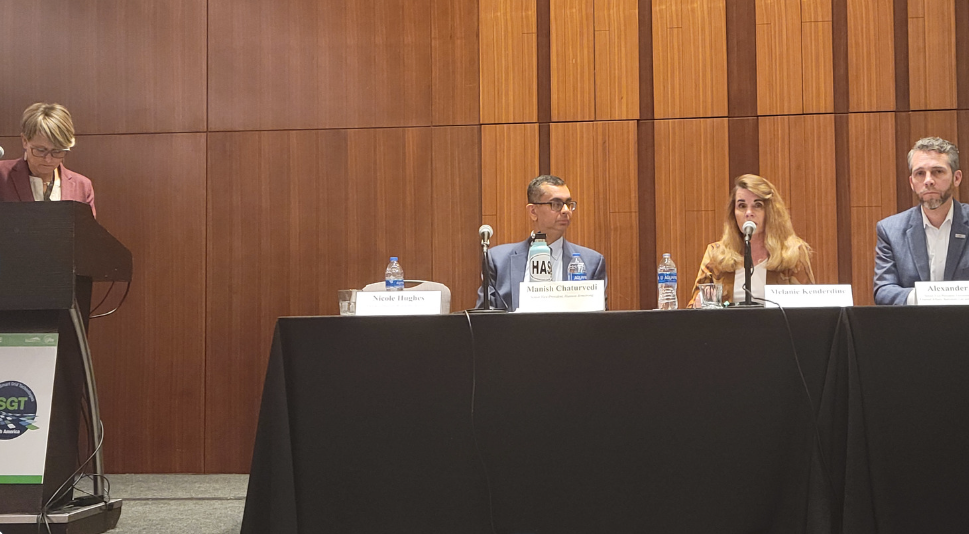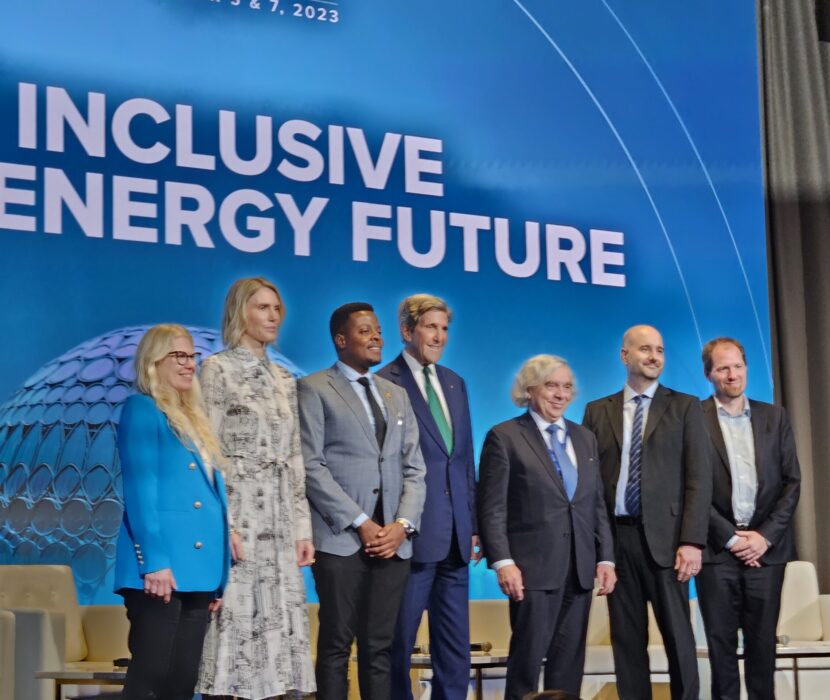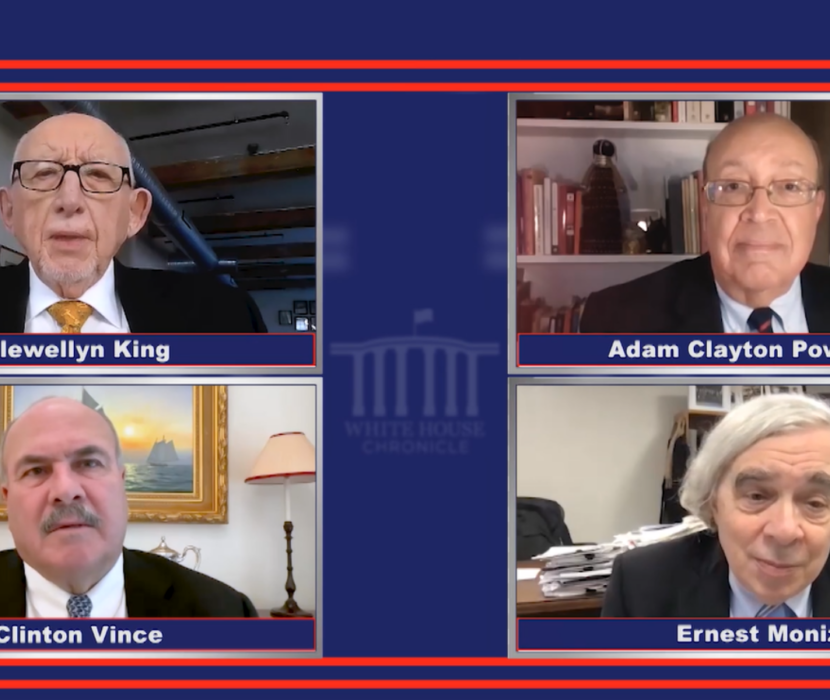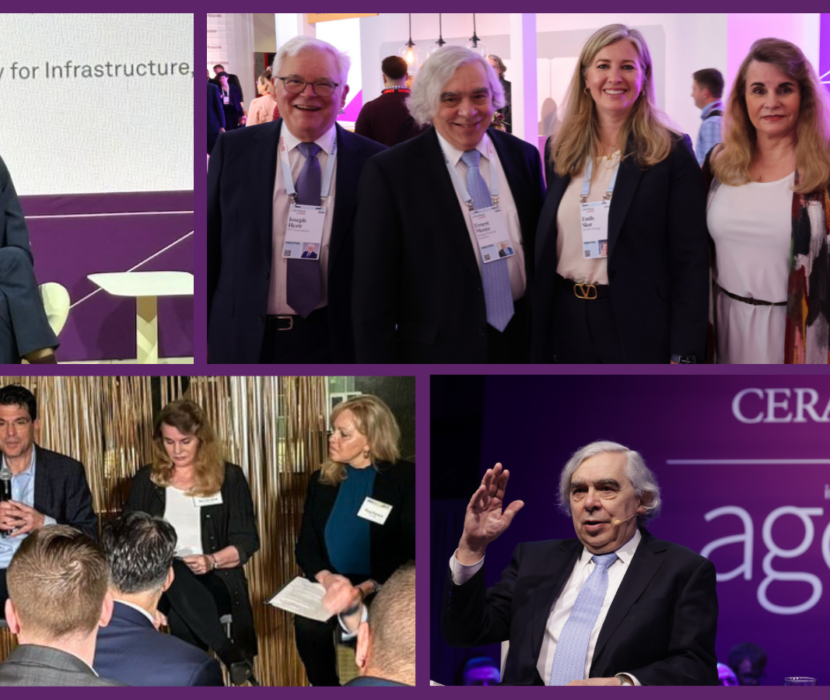
Energy Futures Initiative Principal Melanie Kenderdine spoke at the 2023 North American Innovative Smart Grid Technologies Conference on January 18, 2023, about the need to use policies and regulations to improve the U.S. power grid. She said the U.S. power grid needs upgrades to support the clean energy transition.
The United States is increasingly electrifying the building and transportation sectors as a part of climate mitigation efforts—it is easier to reduce emissions for electricity generation than for other forms of energy. However, Kenderdine said more electrification will require more transmission lines to connect increased electricity supply.
Recent legislation is helping to address this challenge. The Bipartisan Infrastructure Law includes $65 billion for clean energy transmission and grid upgrades, while the Inflation Reduction Act is investing nearly $3 billion to overcome financial and permitting challenges for high-capacity transmission lines.
While funding is critical to improving the power grid, it alone is not enough. Kenderdine emphasized the need to increase transmission speed, high voltage transmission capacity, and the number of transmission towers. She said that based on her own calculations, the United States needs 322,000 transmission towers by 2030 to reach 50% greenhouse gas emissions reductions in that same timeframe.
“Transmission towers are made of aluminum, copper, cadmium, copper alloys, and a lot of concrete anchoring,” Kenderdine said. “We need regulations and policies to protect…supply chains and increased domestic mining in environmentally responsible ways.”
One way to increase electricity supply—to meet increased demand from electrification—is through permitting reform. The National Environmental Policy Act and similar state-level laws mandate that government agencies consider environmental factors for any project that receives government funding or requires a government permit. However, these processes often slow efforts to build clean energy infrastructure and make these projects more expensive. Streamlining the permitting process would enable new clean energy projects to get started more quickly.
Kenderdine underscored that streamlining the permitting process is essential for the massive number of new clean energy projects across the country that we will need to produce affordable energy as part of the clean energy transition.
“Without permitting reform, we cannot get done what we need to get done to address climate change,” she said.
Kenderdine expressed that energy conservation must also play a bigger role in our country’s policies and regulations. Energy efficiency is getting the same services for less energy, such as through improved technology, while energy conservation is reducing energy use. Kenderdine said electrification and efficiency have come to dominate the conversation, but there is still a role for using less energy.
“We have forgotten about conservation,” Kenderdine said. “What are we using electricity for that we could be doing mechanically? I think that we need to take a step back to look at all the things we have electrified and see if we need to do that.”
According to Kenderdine, another problem is that legislation has not significantly restructured the electricity market since 2005, despite technological advancements. Renewables are supplying more energy, and cybersecurity attacks from foreign adversaries pose a greater threat to our grid system. Kenderdine indicated that with these changes, now is an opportune time to reflect on whether the grid system is equipped for modern-day challenges.
“It’s time to take a step back, take another look at how our markets are structured, and see if they are structured to accommodate all the changes,” Kenderdine said.
The North American Innovative Smart Grid Technologies Conference is hosted annually to offer ideas about how to structure the U.S. electrical grid. The conference is sponsored by the IEEE Power & Energy Society, which provides scientific and engineering information on electric power and energy. This society is part of IEEE—a professional organization for technology and engineering professionals. The conference was held January 16-19, 2023, in Washington, D.C.
– Georgia Lyon, Communications Associate
(Share this post with others.)




